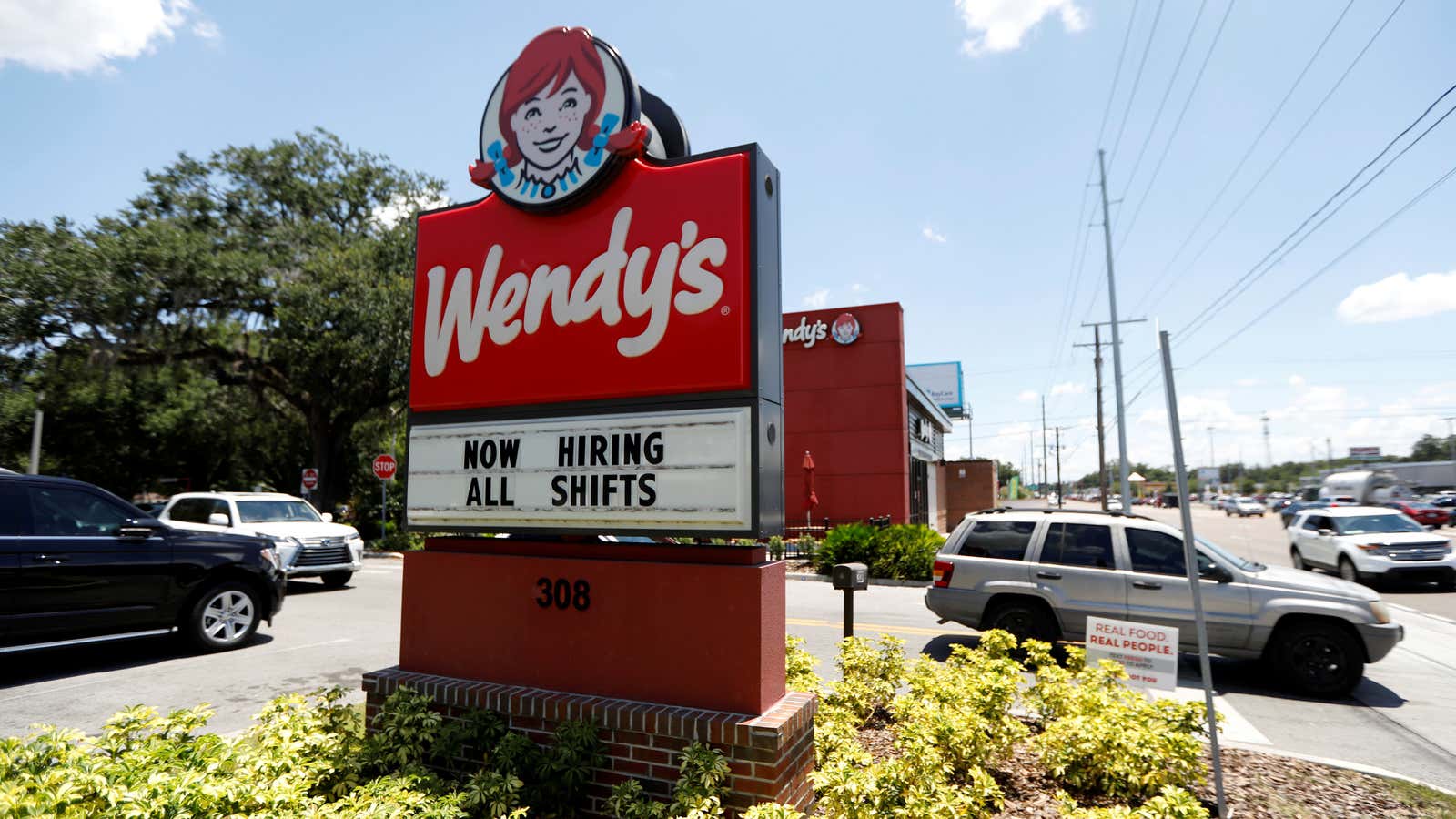There’s something unusual going on in the labor market: US workers are gaining leverage over employers.
Recovery from the pandemic has been weird, the result of a collision between public health measures, economic relief provided by governments and central banks, and social changes inspired by the experience of enduring coronavirus. This has resulted in a labor market that seems at once too hot and too cold: The high number of long-term unemployed, for example, suggests a very loose labor market, while the number of firms who say they can’t fill jobs suggests a tight one.
On the hot side, one of the most amazing facts is that the US economy is currently experiencing the highest rate of workers quitting their jobs that we’ve seen in the last two decades:
This is something you might expect at the peak of an economic cycle, but now it’s happening in the midst of a recovery. It suggests that workers are confident about their ability to find better paying or appropriate employment somewhere else. But if that’s the case, why aren’t we seeing faster reductions in long-term unemployment, or more people re-entering the labor force?
What the highest quit rate in years means
The easiest explanation is that transitions take time. While employers might be ready for new workers—labor market data says there is a job listing for every unemployed person—there are still obstacles between them. One is simply access to vaccines, and firms working at reduced capacity while public health measures are being rolled back. Another may be child care, with daycare centers still re-opening.
The most unusual reason may be that workers have choices, and a new sense of possibility.
Many economists point to pandemic-driven expansions in unemployment insurance as a cause of slower-than-expected jobs growth, although that doesn’t directly affect the quit rate since UI isn’t available for people who leave jobs voluntarily. But these benefits do give already unemployed workers more time to wait for better options in the labor market. Research suggests this results in better matches and higher productivity, particularly for demographic groups including women, minorities, and low-wage workers.
As the economy reopens, demand is surging both due to factors like pent-up savings being spent and government stimulus payments. That’s driving the surfeit in available jobs, not just in sectors like hospitality, but also for contractors connected to the country’s red-hot housing market and in manufacturing. The pandemic also brought a higher rate of retirements, creating new opportunities for workers to move up the chain.
Anecdotally, we’re seeing businesses start to compete for new workers by offering better wages, benefits and training—because workers are demanding it. In white-collar occupations, the experience of working remotely for the last year has led them to make new demands for autonomy, and quitting if these demands aren’t met. At many restaurants, there is a reckoning over decades of substandard pay and working conditions.
Teenagers are working at startling rates
These trends have workers being pulled toward higher-quality employers, while forcing companies to raise wages or expand recruitment and training to bring in workers who might not have been considered acceptable before. That brings up another remarkable data point: Unemployment has plunged among teenagers; Black teenagers are working at the highest rate seen since the statistic began being tracked in 1972.
That’s quite a finding, and suggests young people are stepping up to take on low-wage jobs as older, and presumably more skilled, workers seek better opportunities. More employment opportunities for young people are in general a good thing, although economists caution that they lose out in the long run if young people prioritize work over education.
These unprecedented numbers—of quitting workers and working teenagers—are positive signals for the labor market. But the negative signals still worry some economists, who fear the stagnant return to employment the US underwent following the Great Financial Crisis. Most notably, the labor force participation rate for workers between 25 and 54 hasn’t recovered from the pandemic, reflecting people who gave up on work during the crisis. Expiring unemployment benefits and the return of child care options will help solve the problem, but most of all a market where workers continue to have more say is what will spur the US economy to return to full potential.
